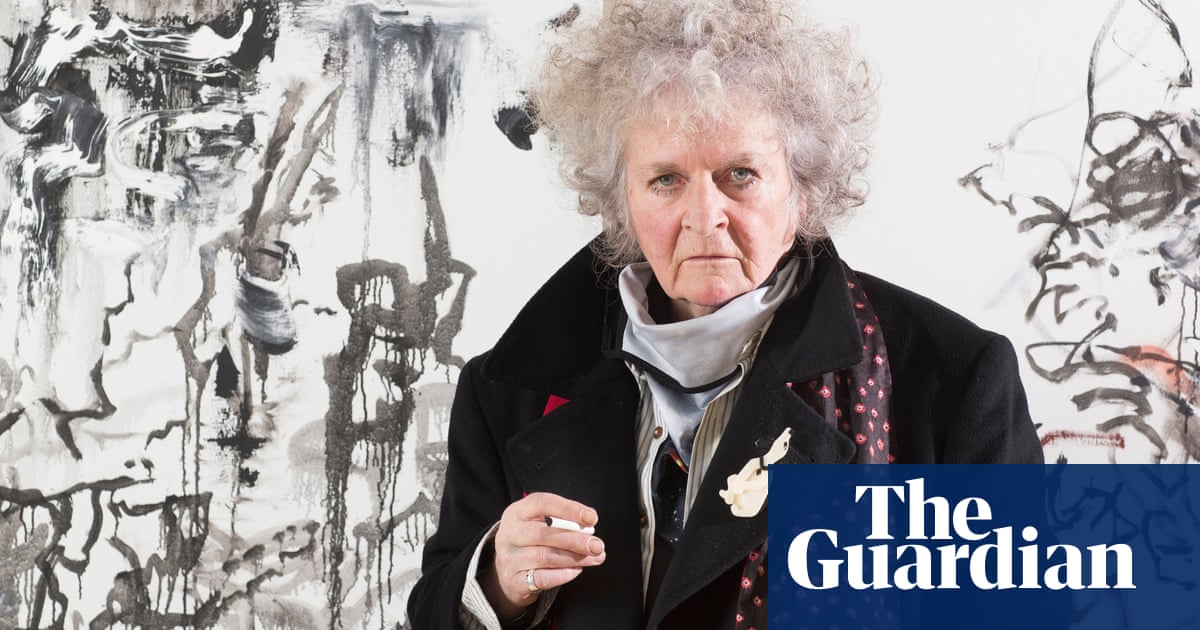Maggi Hambling’s morning routine involves making one drawing with her non-dominant left hand as soon as she gets up – a practice that has come in particularly useful lately, after having her little finger on her right hand amputated.
“On November the 17th, I fell down the stairs, and I had a glass in my hand. And it’s cut through the hand and cut through the little finger,” she told the audience at Charleston festival in East Sussex, holding up her four-fingered hand.
After the accident happened, she said she “just sat at the bottom of the stairs with blood everywhere, because I thought Ipswich hospital would be full of drunks and everything on a Saturday night”.
She waited until the following morning to go to hospital and, after an initial operation, she and the doctors decided to “wait to see how it does”.
“But it just went black and began to stink,” the artist said. “So I had to have it off.”
Ever committed to her art – she gets up at “about five in the summer and six in the winter” and works every day – Hambling was back in the studio as soon as she got back from hospital. She started drawing her right hand, which was in a “great big bandage”, with her left, “and it felt fine”.
Her therapist told her that hand injuries were “most difficult for musicians and artists because a lot of their brains are in their hands”, but that was “news to me”, Hambling said.
“Two of the funniest things” about the injury, she said, were when her plumber came into her studio in Suffolk, “saw I was working with my left hand, and said: ‘Is it going to be half-price then?’
“And then I sent a photograph [of her hand] on my telephone to my friend Carol and she immediately texted back and said: ‘You’ll have to go to Prince Harry’s Invictus Games’,” Hambling said. “And that’s the end of that.”
The artist was speaking at the festival, held in the grounds of the former home of the Bloomsbury Group artists Vanessa Bell and Duncan Grant, alongside the artistSarah Lucas. The pair have just announced a winter show at Sadie Coles HQ, for which they will each select works by the other.
The art scene is “a stinking, bitchy world”, Hambling said, with Lucas adding that a lot of artists want to be in the “success club”, “get rich” and “get a yacht”.
“Like Tracey Emin,” Hambling joked.
